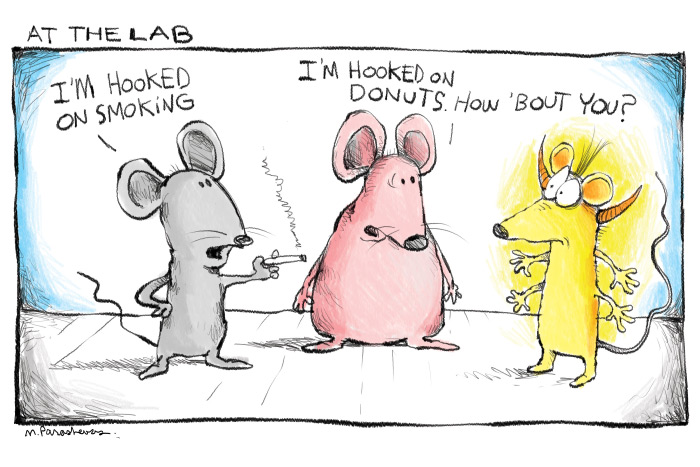Sharper Brains: Learning About Exercise from Rats

Everybody knows that exercise is good for the brain. Lie around like a sloth and you can’t remember names, can’t remember places, you forget where you put your glasses and can’t even find your beer. Get out there and exercise and you sharpen up. A cop pulls you over for something, you have all the right answers, he lets you go.
Until now, however, no study has been done to see if one kind of exercise causes more smartening up than another kind. Well, now that has changed.
According to The New York Times, a study at the University of Jyvaskyla in Finland was published last month to compare resistance training, vigorous running and gentle jogging and see which one causes the most neurogenesis in the hippocampus, according to lead researcher Miriam Nokia—which, for laymen, means that the study notes the increased levels of sparkly stuff in the brain and the closing up of the holes in the white and grey matter which happens when more juice gets pumped through.
I am very interested in this.
Dr. Nokia gathered up a team of scientists at her University in Finland and the team gathered up a wide array of male rats.
In a laboratory, they herded the rats into four groups. One group was asked to just do nothing, just lie around and be cool. They would be the “baseline” group.
A second group would do high-intensity distance training, running on little treadmills placed in their cages in a way so there was no getting off the treadmills. The scientists set the treadmills on high, causing the rats, like it or not, to go off on wild, short bursts of speed for three minutes. At the end of three minutes, the speed would be lowered to allow the rats to do a little slow skittering for two minutes, then it was turned back to the fast setting again. They’d repeat this sequence for 15 minutes.
The third group did resistance training. The scientists would attach little weights to the rats’ tails, then put them at the bottom of a climbing wall. The rats would climb, come down and do it again.
The fourth group went jogging. They were put in cages that had jogging wheels at one end, and were let free to go jogging when they felt like it. Typically, they’d jog for two miles a day, although some did more and some did less.
After seven weeks of this, Dr. Nokia and her team examined the brains of all the rats. They found that those that did the heavy weight training had big strong muscles but no more sparkly brain stuff than those who sat around and did nothing.
They found that those who did the high-intensity treadmill work had somewhat more sparkly brain stuff than those who sat around and did nothing.
And they found that those who did the easy jogging on and off whenever they wanted got the highest amount of sparkly brain stuff.
The scientists think the rats who did the high-intensity interval training might have had less sparkly stuff because they were so stressed about having to do that particular training.
I wasn’t so sure. So I did it. I ran around the block a dozen times as fast as I could every day for seven weeks and tried to do some math problems. I tied a weight to my tail and scampered up and down the climbing wall at the YMCA here in East Hampton for seven weeks and tried to do another math problem. I did the gentle jogging at will off and on for the seven weeks and again tried to do a math problem.
I found that although I was exhausted, bleary eyed, bruised and battered, I failed to succeed in finding the answer to the math problem in any of the four cases. Ipso facto, I don’t think one thing was any better than the other as far as humans go.
But then, what do I know?



